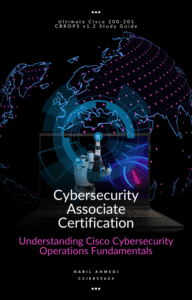Building Multi-Agent Systems: The Future of Autonomous AI Workflows
Multi-agent systems (MAS) represent the cutting edge in autonomous AI workflows—a cornerstone technology for next-generation intelligent enterprises. Moving beyond isolated AI models, MAS enable multiple AI agents to coordinate, collaborate, and independently solve complex problems across diverse domains. By 2026, multi-agent architectures will redefine business operations, innovation, and scalability, unlocking new levels of productivity and insight. This article explores the technology, applications, core components, challenges, and roadmap to adopting MAS in enterprise settings, along with expert advice for career aspirants.
Understanding Multi-Agent Systems (MAS)
What Are Multi-Agent Systems?
MAS consist of multiple intelligent agents that interact within an environment or system, collaboratively or competitively pursuing individual or collective goals. These agents possess autonomy, communication abilities, reactive and proactive behaviors, enabling dynamic and scalable AI ecosystems.
Key Properties of Agents in MAS
- Autonomy: Operate independently with minimal human intervention.
- Social Ability: Communicate and collaborate with other agents.
- Reactivity: Respond to environmental changes in real time.
- Proactivity: Initiate goal-oriented actions proactively.
Architecture Models: Hierarchical vs Peer-to-Peer
MAS architectures vary between hierarchical, with centralized control, and peer-to-peer, with distributed collaboration. Hybrid models blend both, balancing control and flexibility to optimize scaling and resilience in enterprise workflows.
Transformative Applications in Enterprise
AI-Driven Process Automation
MAS enable autonomous orchestration of complex workflows spanning IT, customer support, supply chains, and R&D. Agents collaborate to optimize resource allocation, risk management, and operational efficiency without constant human oversight.
Intelligent Digital Assistants and Chatbots
Agents collaborate within conversational ecosystems, handing off tasks, accessing shared knowledge, and delivering personalized user experiences across platforms.
Autonomous Decision-Making and Optimization
Agentic AI workflows empower enterprises to perform real-time decision-making, predictive maintenance, demand forecasting, and adaptive planning at scale.
Trust, Security, and Ethical Governance
MAS incorporate transparency, explainability, and compliance frameworks ensuring accountable AI-driven operations.
The Role of AI Technologies Driving Agentic AI
- Large Language Models powering natural language interaction
- Reinforcement Learning enabling self-improvement
- Blockchain facilitating decentralized agent economies
- Model Context Protocol (MCP) standardizing inter-agent communication
Challenges and Solutions
- Complexity in coordination and conflict resolution
- Data privacy and security in collaborative AI
- Integration with existing IT infrastructure
- Human oversight and ethical AI principles
Implementation Roadmap for Enterprises
- Assess current AI maturity and strategic goals.
- Identify workflows with high MAS potential.
- Pilot multi-agent projects with clear KPIs.
- Develop governance and monitoring frameworks.
- Scale successful deployments with adaptive architectures.
Building a Career in Multi-Agent AI
- Develop foundational AI and ML expertise.
- Gain experience with agent architectures and reinforcement learning.
- Contribute to open-source multi-agent frameworks.
- Pursue certifications in AI, cloud, and security.
- Engage with AI research and industry events.
Conclusion
Multi-agent systems epitomize the future of autonomous AI workflows, transforming how enterprises innovate, operate, and compete. By enabling coordinated, scalable intelligence, MAS unlock business value impossible with isolated AI models alone. Embracing this paradigm positions organizations—and careers—at the forefront of the digital revolution as 2026 and beyond unfold.
The future is multi–agent, autonomous, and intelligent. Are you ready to lead the transformation?
